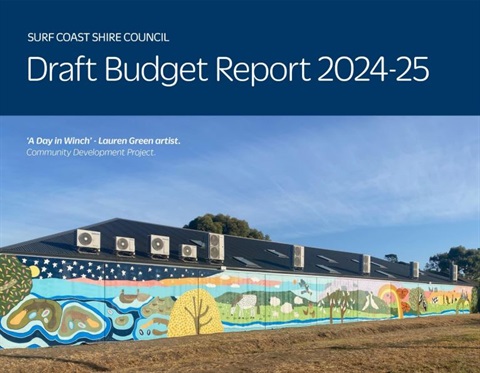ASIC is urging directors, preparers of annual and half-year reports and auditors to assess whether companies’ 2022 annual and half-year financial reports provide useful and meaningful information for investors and other users, as it highlights key focus areas for reporting by companies for the reporting period ending 30 June 2022.
ASIC Commissioner Sean Hughes said, ‘Many companies are facing changing market conditions and uncertainties. Directors and preparers should assess the impact on current and future performance, asset values and provisions. They should also ensure that increasing demands for better information for investors on uncertainties, key assumptions, business strategies and risks are met as required under the existing reporting regime for both annual and half-year reports.’
ASIC has highlighted a number of areas for attention, in particular:
- asset values
- provisions
- solvency and going concern assessments
- events occurring after year end and before completing the financial report
- disclosures in the financial report and Operating and Financial Review (OFR).
ASIC notes companies will be affected differently depending on their industry, where they operate, how their suppliers and customers are affected, and a range of other factors.
Companies may continue to face some uncertainties about future economic and market conditions, and the impact on their businesses. Assumptions underlying estimates and assessments for financial reporting purposes should be reasonable and supportable.
Directors and management should assess how the current and future performance of a company, the value of its assets and its provisions, and business strategies may be affected by changing circumstances, uncertainties and risks such as:
- COVID-19 conditions and restrictions during the reporting period;
- changes in customer preferences and online purchasing trends;
- use of virtual meetings and more flexible working arrangements;
- the discontinuation of financial and other support from governments, lenders and lessors, including any possible increases in the level of insolvencies;
- the availability of skilled staff and expertise;
- ongoing restrictions to deal with COVID-19 in different jurisdictions;
- the impact of rising interest rates on future cash flows and on discount rates used in valuing assets and liabilities;
- increases in oil prices;
- geopolitical risks, including the Ukraine/Russia conflict;
- commitments and policies on climate and carbon emissions by governments;
- technological changes and innovation;
- legislative and regulatory changes; and
- other economic and market developments.
This list is not intended to be exhaustive and there may be other factors to consider in the circumstances of individual entities. These factors may also be relevant in assessing the ability of an entity’s borrowers, debtors and lessees to meet their obligations to the entity, and the ability of key suppliers to continue to provide goods and services to the entity.
Industries that may be particularly affected include the construction industry, owners of commercial property and large carbon emitters.
Uncertainties may lead to a wider range of valid judgements on asset values and other estimates. These uncertainties may change from period to period. Disclosures in the financial report about uncertainties, key assumptions and sensitivity analysis will be important to investors.
The Operating and Financial Review (OFR) should complement the financial report and tell the story of how the entity’s businesses are impacted by both COVID-19 and non-COVID-19 factors. The underlying drivers of the results and financial position should be explained, as well as risks, management strategies and future prospects. Forward-looking information should have a reasonable basis and the market should be updated through continuous disclosure if circumstances change. Further guidance can be found in ASIC’s Regulatory Guide 247 Effective disclosure in an operating and financial review.
More detail about ASIC’s focus areas for 30 June 2022 reporting is outlined in the attachment to this media release.
The reporting process
Appropriate experience and expertise should be applied in the reporting and audit processes, particularly in more difficult and complex areas, such as asset values and other estimates.
Directors and auditors should be given sufficient time to consider reporting issues and to challenge assumptions, estimates and assessments.
Directors should make appropriate enquiries of management to ensure that key processes and internal controls have operated effectively during periods of remote work.
The circumstances in which judgements on accounting estimates and forward-looking information have been made, and the basis for those judgements, should be properly documented at the time and disclosed as appropriate.
As in previous reporting periods, ASIC will review the full-year financial reports of selected larger listed entities and other public interest entities as at 30 June 2022.
Attachment to 22-124MR ASIC highlights focus areas for 30 June 2022 reports
1. Uncertainties and risks
A number of uncertainties and risk that may affect asset values, liabilities and assessments of solvency and going concern are shown in the bullet point list in the main body of this release.
2. Asset values
Examples of matters that may require the focus of directors, preparers and auditors in relation to asset values in the current environment include:
Impairment of non-financial assets |
|
Values of property assets |
|
Expected credit losses on loans and receivables |
|
Value of other assets |
|
3. Provisions
Consideration should be given to the need for and adequacy of provisions for matters such as onerous contracts, leased property make good, mine site restoration, financial guarantees given and restructuring.
4. Subsequent events
Events occurring after year-end and before completing the financial report should be reviewed as to whether they affect assets, liabilities, income or expenses at year-end or relate to new conditions requiring disclosure.
5. Disclosures
Considerations on disclosure include:
General considerations |
|
Disclosures in the financial report |
|
Disclosures in the OFR |
|
Assistance and support from others |
|
Non-IFRS financial information |
|
Disclosure in half-year reports |
|
6. Other matters
- Consideration of whether off-balance sheet exposures should be recognised on-balance sheet, such as interests in non-consolidated entities.
- In relation to aged care providers, review of the treatment of aged care bed licenses following the announcement in May 2021 that the licences will be discontinued on 1 July 2024 and subsequent information from the Department of Health.
- Disclosure of material penalties for non-compliance with sanctions imposed in Australia or elsewhere in relation to Russia.
- Ensuring the recognition of assets, liabilities, income and expenses in registered scheme balance sheets and income statements where individual scheme members have pooled interests in assets and returns with some or all other members in substance.








